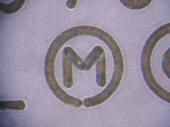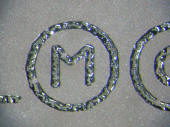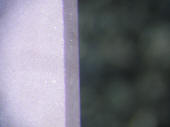|
Faked CPUs
On my latest search for CPUs on
the junk yard I was lucky enough to find a very rare processor, which I
didn't know that it even existed!
I found a Pentium with 200MHz in a
ceramic case without MMX.
The part number was: A80502-200 SU046.
While searching for information on
this CPU to add it to my database I found out that there was no data or
spec code available on
this processor.
That really was strange and I wanted to take a closer look at the CPU
under the microscope.
Doing so I discovered the
following inconsistencies:
1)
the engraved black writing looks quite different than on other
processors.
2)
the ceramics appeared to be a lot rougher - especially around the edges
of the chip.
 |
 |
 |
 |
engraved writing
on an
original Intel Pentium |
engraved writing
on fake CPU |
edge view of
original
Intel Pentium |
edge view of
fake
processor |
So I tried to scratch the surface with a cutter and succeeded, which
should not have been possible,
since ceramics are harder than steel. I
did more research on the internet and found out that there had been a
major fraud with processors in the
mid 90s in Europe.
Over several years the European PC market was flooded with falsified
Intel processors. Over years there
seemed to be no chance to catch the scammers until 1996. Then the police
managed to track down an
international gang, who were then accused of tax and customs fraud along
with money laundering and
falsification of computer components at a large volume.
At 09:00 on the 26th of November 1996 30 officers occupied all offices
and phones. 5 officers along with an
Intel employee searched the storage rooms and investigated the Pentium
processors. Even the Intel guys
had a hard time finding out the fakes as they were perfectly done.
This mission - codenamed 'Goldfish' - was a huge success. 2000 police
officers in 10 countries raided
400 offices and apartments in Germany and in the south and west of
Europe. 12 people were being
arrested and the officers confiscated tons of files, computers and fake
processors.
The majority of the fakes were re-labeled Pentium-133 to 166MHz and
Pentium 166 to Pentium 200MHz.
The chips had been bought in Europe and exported to Hong Kong and Taiwan
- mostly on a legal way -
taking advantage of the VAT refund. The re-labeled Pentiums were
smuggled back to Europe to be sold
at around 200USD above their actual value. Those were transported by
couriers carrying around
100 processors in their bags.
source: C'T Magazine
|



